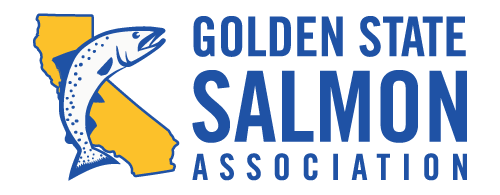Water Policy: Fighting for Flows That Keep Salmon Alive
Smarter Water Management for a Stronger Salmon Future
The Golden State Salmon Association (GSSA) is on the front lines of California’s water battles, where every decision about how much water flows down our rivers can mean life or death for salmon.
We advocate for science-based water policies at the state and federal levels, defend salmon habitat in court, and mobilize Californians to hold agencies accountable. Our mission is to ensure that salmon continue to provide economic, recreational, cultural, and environmental benefits for generations to come.
Why Water Policy Matters
California’s rivers once ran cold and strong, sustaining millions of wild salmon. Today, dams, diversions, and outdated water policies have choked those flows. Too often, water that should stay in rivers is pumped hundreds of miles south, leaving salmon with too little, too warm, and too polluted water to survive.
Healthy salmon runs depend on cold, clean water at key moments in their life cycle, especially when young fish migrate to the ocean and when adults return to spawn. Without adequate flows and cool river temperatures, salmon eggs die in the gravel, juvenile fish can’t reach the ocean, and entire populations collapse.
Improving Cold-Water Flows
After wet winters, salmon runs always rebound, clear proof that water is the key. Higher spring flows help baby salmon move safely downstream and reach the ocean, increasing survival rates dramatically. But during dry years, when salmon need water the most, our current system delivers the least.
Reservoirs could be operated more like those on the Columbia and Snake Rivers in the Pacific Northwest, releasing water in spring to help young salmon migrate. Instead, water managers often prioritize agricultural deliveries and urban diversions, starving rivers when fish most need flow and cool temperatures.
Dams capture natural runoff and block the seasonal rhythms salmon evolved with. In wet years, enough water may spill below dams to mimic natural flows, but in dry years, when it’s needed most, those flows disappear. Federal regulations have repeatedly fallen short by not requiring adequate spring releases for salmon survival.
Salmon don’t need high flows year-round, just at the right times in their life cycle. Smarter, science-driven reservoir operations could prevent massive egg losses and improve survival across the Central Valley.
Managing Temperature and Timing
Cold water isn’t just about flow; it’s about timing and management. Federal law requires river temperatures below 56°F from June through October to protect endangered winter-run Chinook salmon spawning on the upper Sacramento River. But fall-run salmon, which spawn later in the season, often face much warmer water, leading to egg mortality and failed reproduction.
To make matters worse, reservoirs frequently reduce releases on October 1, right when fall-run salmon are spawning. When flows drop too quickly, salmon nests, or redds, can become exposed and dry out overnight, killing the next generation before it even begins.
This level of mismanagement is preventable. With better temperature monitoring, adaptive water operations, and stronger environmental safeguards, we can restore a more natural rhythm to California’s rivers and give salmon a fighting chance.
How GSSA Leads the Fight
GSSA works with scientists, lawmakers, agencies, and community partners to reform how California allocates and manages water. Our team:
- Pushes for policy reform that prioritizes river health and salmon survival.
- Mobilizes the public to demand accountability from water agencies and decision-makers.
- Uses strategic litigation to defend salmon and fishing communities from harmful water policies.
- Builds coalitions with conservation groups, Tribes, and businesses that depend on healthy rivers.
Through advocacy, science, and public action, we’re working to rebalance California’s water system—so it serves both people and salmon.
Take Action
Every voice matters in the fight for fair water policy.
Join us to help restore flows, reform water management, and bring California’s salmon back from the brink.
[Donate Now →]
[Become a Member →]
